Eggnog is a funny word. Sure, everyone knows what an egg is, but what is nog? And how did the fusion of those two words become synonymous with the delicious holiday drink made with milk and vanilla and a little holiday spirit? To understand, you need a little history.
Thought to be originally conceived in Europe as an egg and wine punch, eggnog was first introduced to colonial America in the early 1800s. The European wine ingredient was replaced with rum, a standard liquor in many Central, South American and Caribbean countries, which was easier (and cheaper) to find than wine. Around that time eggnog started to resemble the drink we know today. The introduction of rum into the drink, referred to as “grog” in colonial America, has led food historians to believe the nomenclature went from “egg’n’grog” to “eggnog”.
Eggnog’s popularity spread quickly up and down the Americas, and today there is a version served in every country of the Latin world, and the popular Mexican eggnog spinoff, rompopo, was
Eggnog Know-How:
Ingredients: A cook is only as good as the elements they start with, and in an eggnog recipe, where the ingredients will shine, it’s important to source good quality, preferably organic products. Ditto for spices. Fresh ground or whole spices like nutmeg and vanilla beans add much more flavor and depth than pre-ground ones.
Eggs: Fresh eggs work much better than older eggs. Allowing yolks and whites to come to room temperature is the key to whipping success. After beating whites and sugar, peaks will be able to hold their shape when mixer is removed. After beating yolks, they should be creamy, pale yellow, and double their original volume.
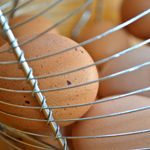
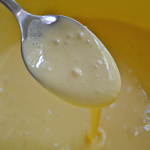
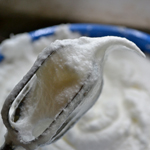
Tempering – Egg yolks are often used to thicken mixes for puddings, custards and in this case, eggnogs. The tempering method is used to prevent eggs from scrambling when added to hot liquids, such as milk. To temper, make sure your beaten egg yolks are in a large bowl. Begin to beat eggs with a whisk; one tablespoon at a time, add hot liquid (milk) to bowl with yolks, constantly whisking while liquid is added, up to ¼ cup. Once tempered, add yolks to the remainder of the hot mixture, whisking the milk constantly during this process, then continue with recipe.
Whether you are in the mood for something traditional to sip fireside on cold winter nights or something to light up a party, one of these recipes is sure to do the trick!
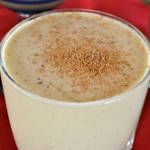
- 8 egg yolks
- 2/3 cup sugar (plus 1 tablespoon)
- 1 quart milk
- 1 pint heavy cream
- 1 vanilla bean
- 2 teaspoons nutmeg, plus more for garnish
- 8 egg whites
- 8 egg yolks
- 2/3 cup sugar (plus 1 tablespoon)
- 1 quart milk
- 1 pint heavy cream
- 1 vanilla bean
- 1 inch pieceginger root, peeled and sliced thinly
- 2 teaspoons nutmeg (plus more for garnish)
- 2 teaspoons orange zest
- 1 cup rum or whiskey
- 8 egg whites
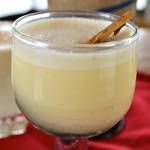
- 16 egg yolks
- 3/4 cup sugar (plus 1 tablespoon)
- 1 quart milk
- 1 pint heavy cream
- 1/2 cup finely ground almonds (plus more for garnish)
- 1 vanilla bean
- 1 canela or cinnamon stick
- 2 cups white rum
- 8 egg yolks
- 1/2 cup sugar (plus 1 tablespoon)
- 1 quart milk
- 1 pint heavy cream
- 1 vanilla bean
- 1 cinnamon stick (canela)
- 1 teaspoon nutmeg, plus more for garnish
- 4 ounces bittersweet chocolate, chopped
- 2 ounces milk chocolate, chopped
- 1/8 teaspoon salt
- 1/4 teaspoon ground cayenne pepper, plus more for garnish
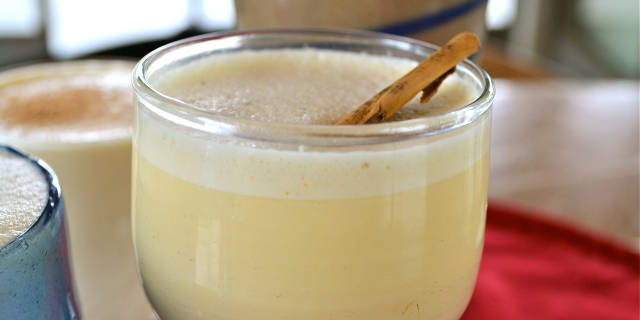
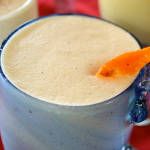
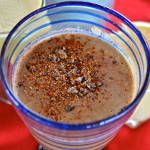

![Making Mealtime Matter with La Familia: Easy Sofrito [Video]](https://thelatinkitchen.com/wp-content/uploads/2015/10/sofrito-shutterstock__0-500x383.jpg)
![Easy Latin Smoothies: Goji Berry Smoothie [Video]](https://thelatinkitchen.com/wp-content/uploads/2015/12/goji_berry-shutterstock_-500x383.jpg)
















![Fun and Fast Recipes: Fiesta Cabbage Salad [Video]](https://thelatinkitchen.com/wp-content/uploads/2015/11/fiesta_cabbage_slaw-shutterstock_-500x383.jpg)









